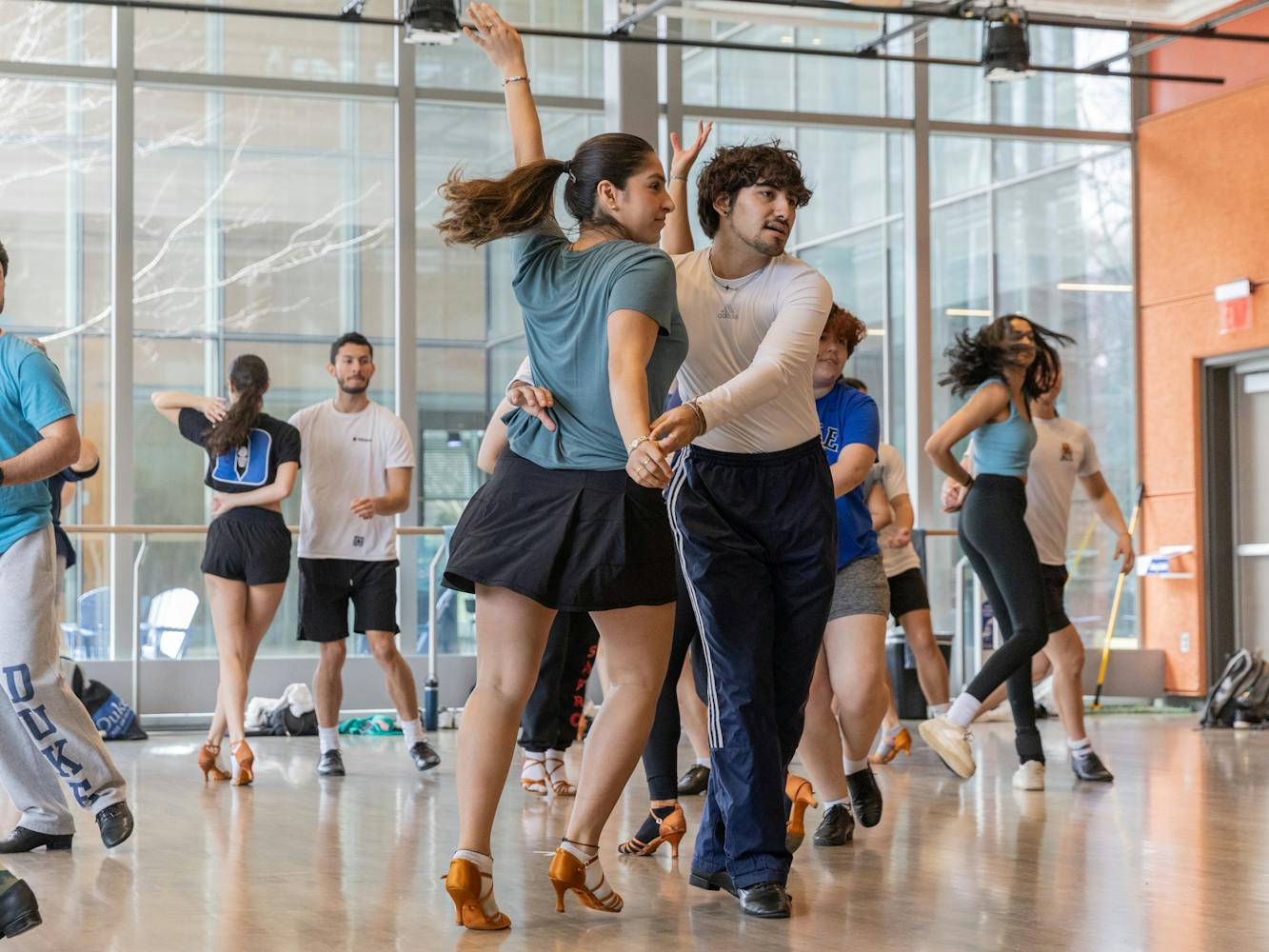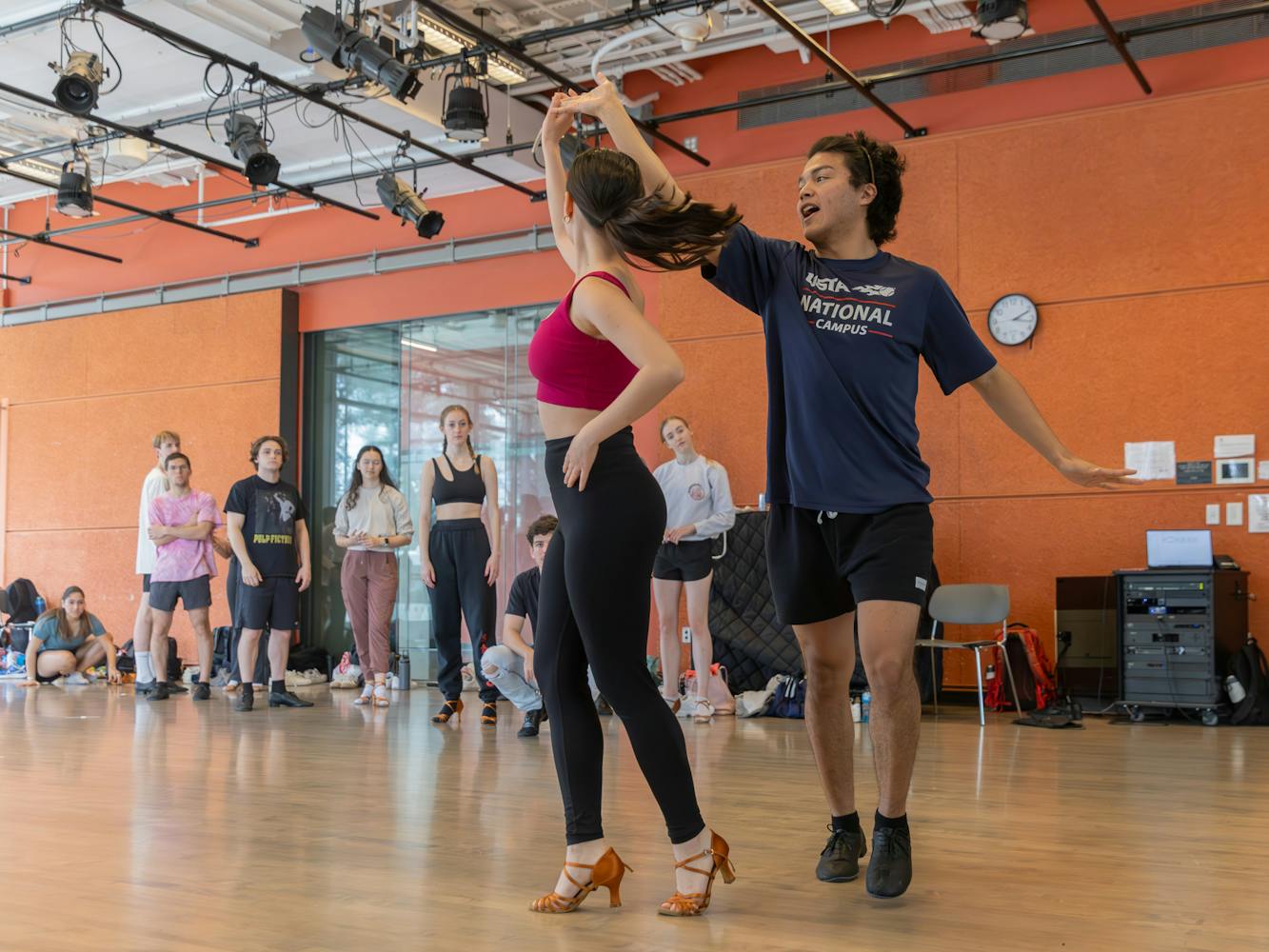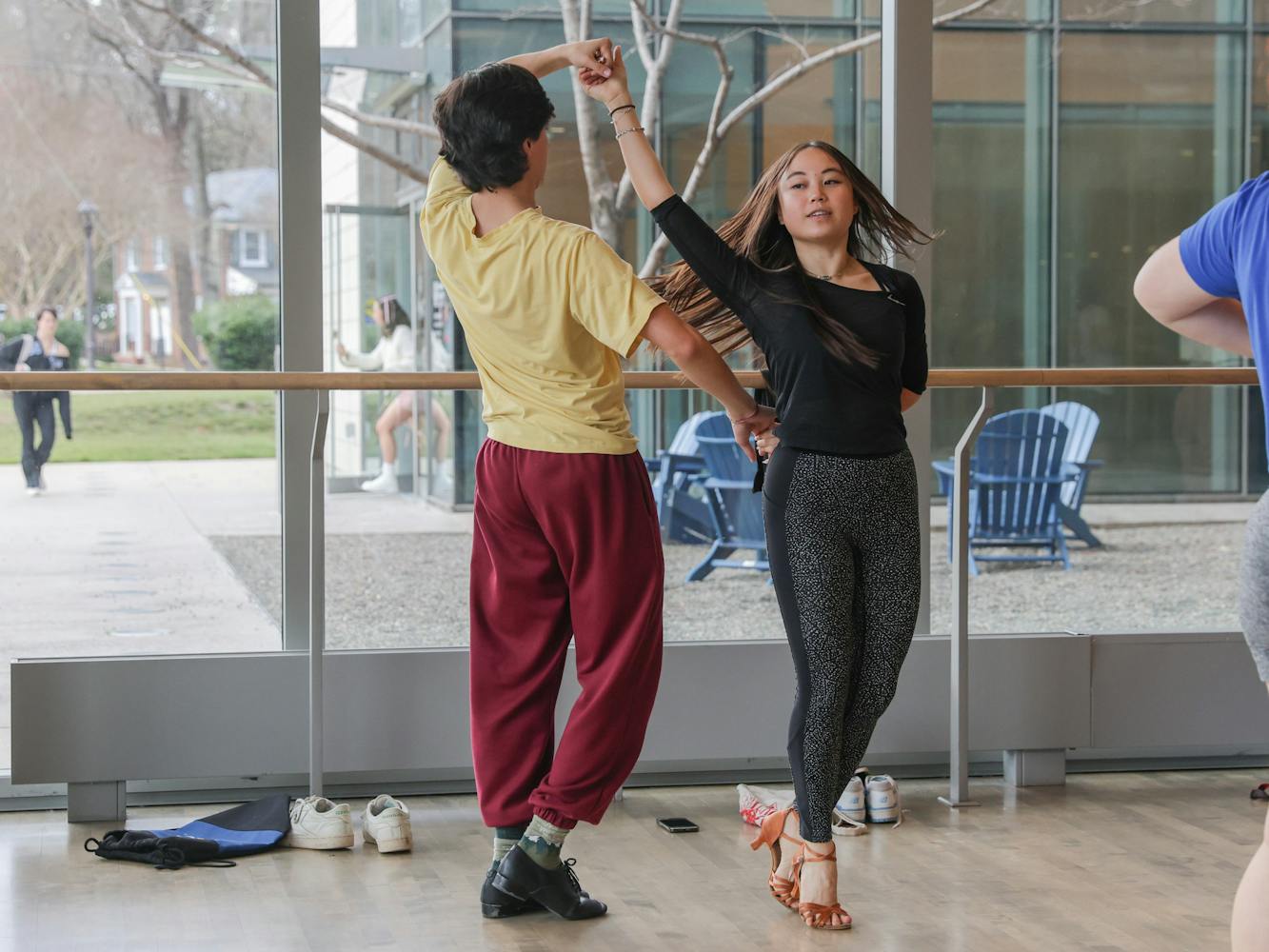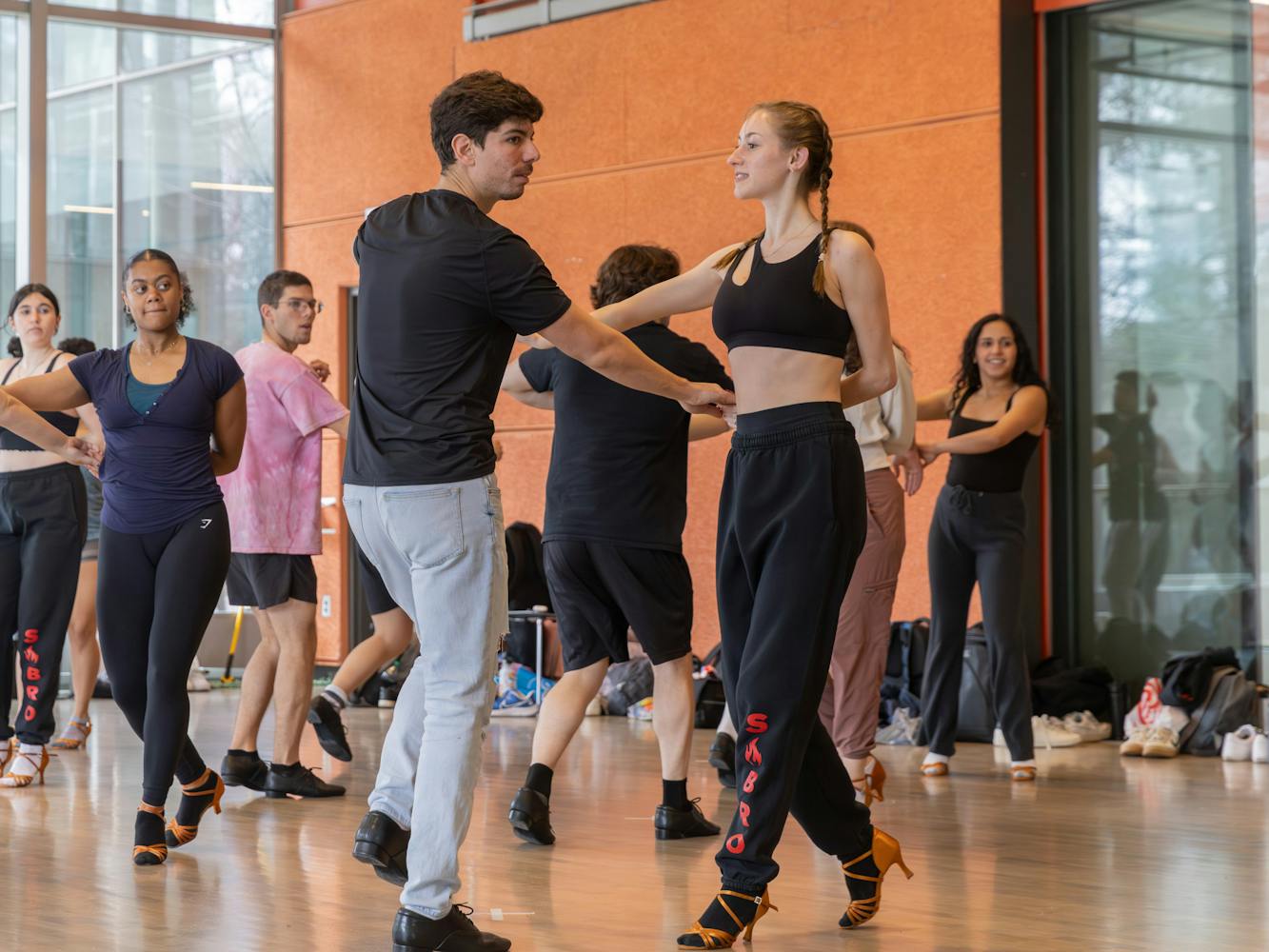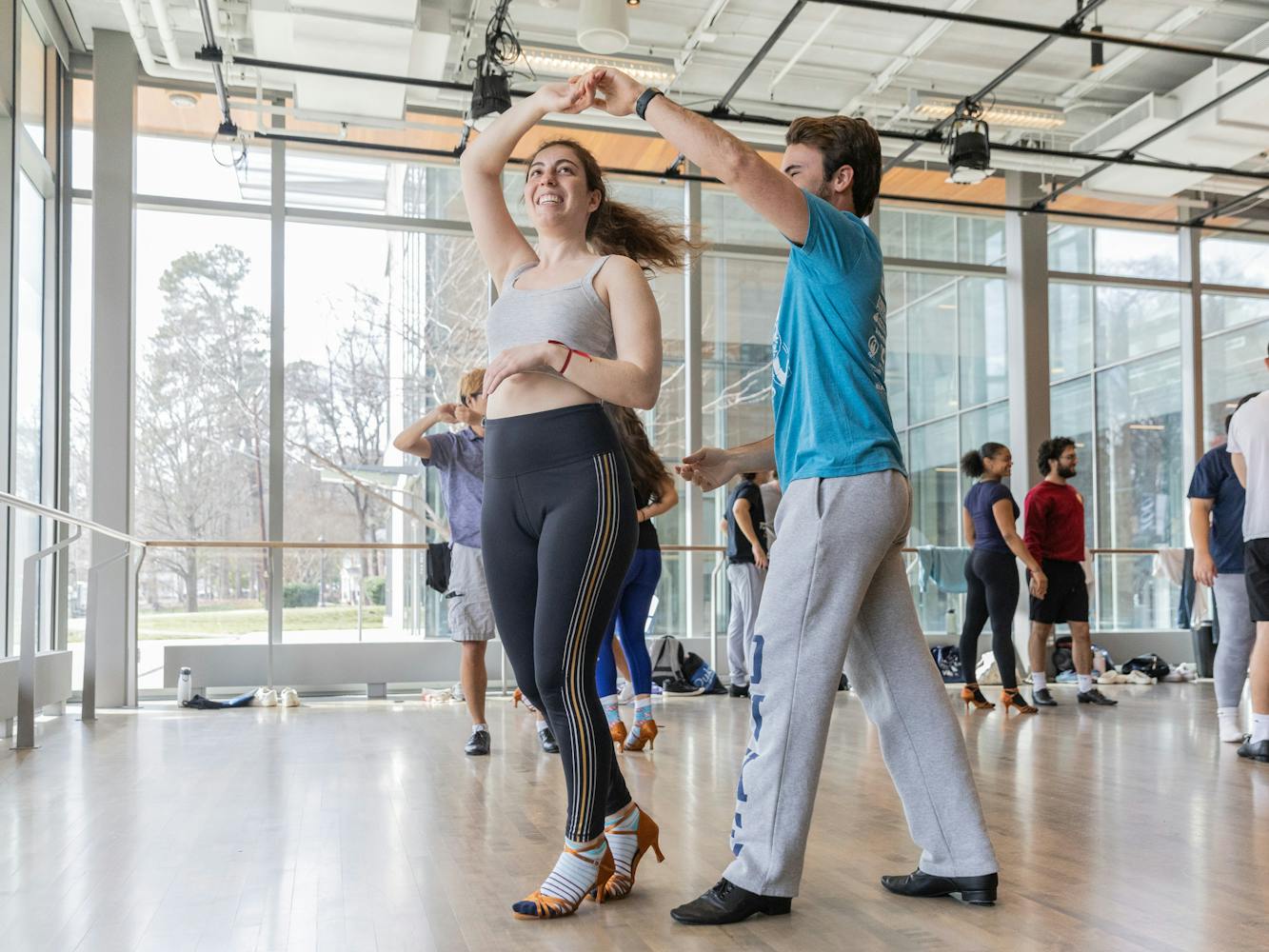Dance culture is widespread at Duke. As the semester comes to a close and many dance groups on campus hold their spring showcases, The Chronicle took a look at the first five dance groups founded at Duke. Capturing their energies, their histories and their commitment through photographs and short interviews, our reporters worked to highlight this crucial part of on-campus life.
The Chronicle spoke with Sabrosura’s president Julián Camacho, a junior, about Sabrosura’s mission and involvement with both the Duke and Durham communities. This interview has been lightly edited for length and clarity.
The Chronicle: Walk me through how this group was founded.
Julián Camacho: It’s been very interesting, because I have very little information on what Sabro was before me because Sabro almost died during [the COVID-19 pandemic]. Since we’re partner dancing, the people who were here experienced a lot of restrictions on whether or not they could practice.
The year I came in, I only found [Sabro] at the club fair because I was actively looking for them. During my freshman year, we had to hold spring auditions, which we usually don’t, just to keep the group alive. And we ended my freshman year with [around] 12 members.
In my sophomore year, my co-president Santi Garcia and I took it upon ourselves to revamp Sabro. We accepted up to 40 new members. We focused a lot on teaching new members all the salsa, bachata and all that stuff.
That was fall semester, and spring semester we were preparing our showcase. And not to flex, but we had the most attended dance showcase at Duke since [the pandemic] — 900 people in the audience plus 100 on livestream.
TC: What is the mission of this group?
JC: The biggest thing is to just be a space to enjoy Latin dance. Obviously, there’s a big cultural aspect to it, and we try to share the culture with as many people as we can.
A lot of our dancers have come in with zero experience. I think maybe four or five of them have had Latin dance experience and we’re 40 [members], so it’s a lot of teaching Latin dance from the basics. Our goal in auditions is to take not people who know how to dance, but people who can learn.
We don’t expect people to know how to salsa when they walk in, and barely anybody has any salsa experience. But we teach the basics and a few combos, and we see if you can get it — if you have the "music rhythm" and can move your body. The criteria we use to decide is pretty much "Who is here to learn, who is here to have fun and learn?"
TC: Walk me through special events or traditions this program organizes.
JC: Salsa on the Steps is a huge tradition that we have. Obviously, the yearly showcase, we always perform in. And we started a tradition to work with Duke DevilTHON, which is partnered with the Children’s Hospital, and we run a fundraiser every fall. We also do our best to run workshops; we work with Mi Gente and [Lambda Theta Alpha], the Latin sorority.
TC: How does this group interact with Durham?
JC: We’re working with a fundraiser to raise money for the Duke Children’s Hospital, but we haven’t gone much farther than that. We’ve had a couple of professors ask us to teach dance lessons for their classes.
This year, we’re trying to expand a little bit. We have a competition with the Latin dance groups from [the University of North Carolina at Chapel Hill] and N.C. State. It’s called La Competencia, it’s coming up way too soon. We’re going to have a competition, and there’s going to be judges. We haven’t had the chance to interact with the public schools or the Durham community itself. But it’s definitely something I’m sure further management will look into.
TC: How does this group interact with Duke and teach others about Latin dance culture?
JC: This year, we experimented with having a workshop that was only open to Duke dancers. We publicized it through the dance community. It was really fun, but most of the workshops we do [are] open to anyone. Like, we’re doing it in front of the Chapel. If you stop by and dance, no one’s going to stop you!
We intentionally do a workshop on Family Weekend because that just happens to be so much fun. Everybody brings their parents and you get to dance with your parents.
TC: How has your membership in this group affected how you experience Latin culture at Duke?
JC: For me, it’s a wonderful place to have a little bit of home. I was never a dancer — I knew how to dance salsa, because you gotta know — but I’ve never danced at a studio. So when I came here, this was the first time having rehearsals, performance, and it was a really cool way to bring in what I already knew and improve upon it, and then [to] each other.
The social events that we do, we have so much fun. It’s 40 of us, so we just get to share a lot of time together; we all get along really well. Just like a big little family in Sabro.
For the fall showcase on the first week of classes, all the presidents have to walk on stage and give a little speech. I walk on stage, and everybody is shouting over me, so excited to see Sabro. And it’s a really nice feeling to see that I’ve helped create something like that. I helped set up a place for this family to be there, and all of the Sabro members have taken part in it. It’s really nice to see 40 people come together with this one goal.
Get The Chronicle straight to your inbox
Signup for our weekly newsletter. Cancel at any time.
Alyssa Ting is a Trinity junior and a photography editor of The Chronicle's 119th volume.


